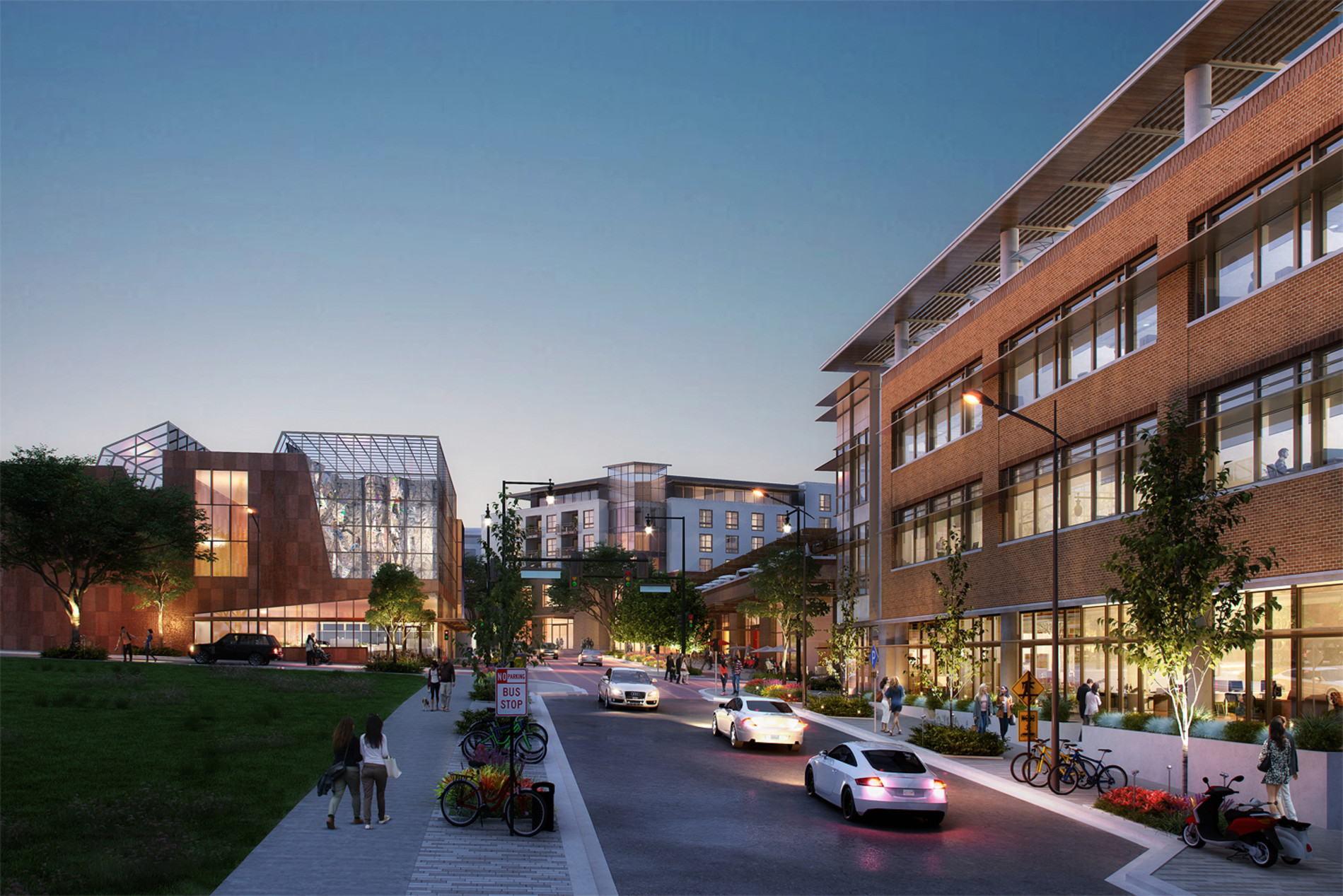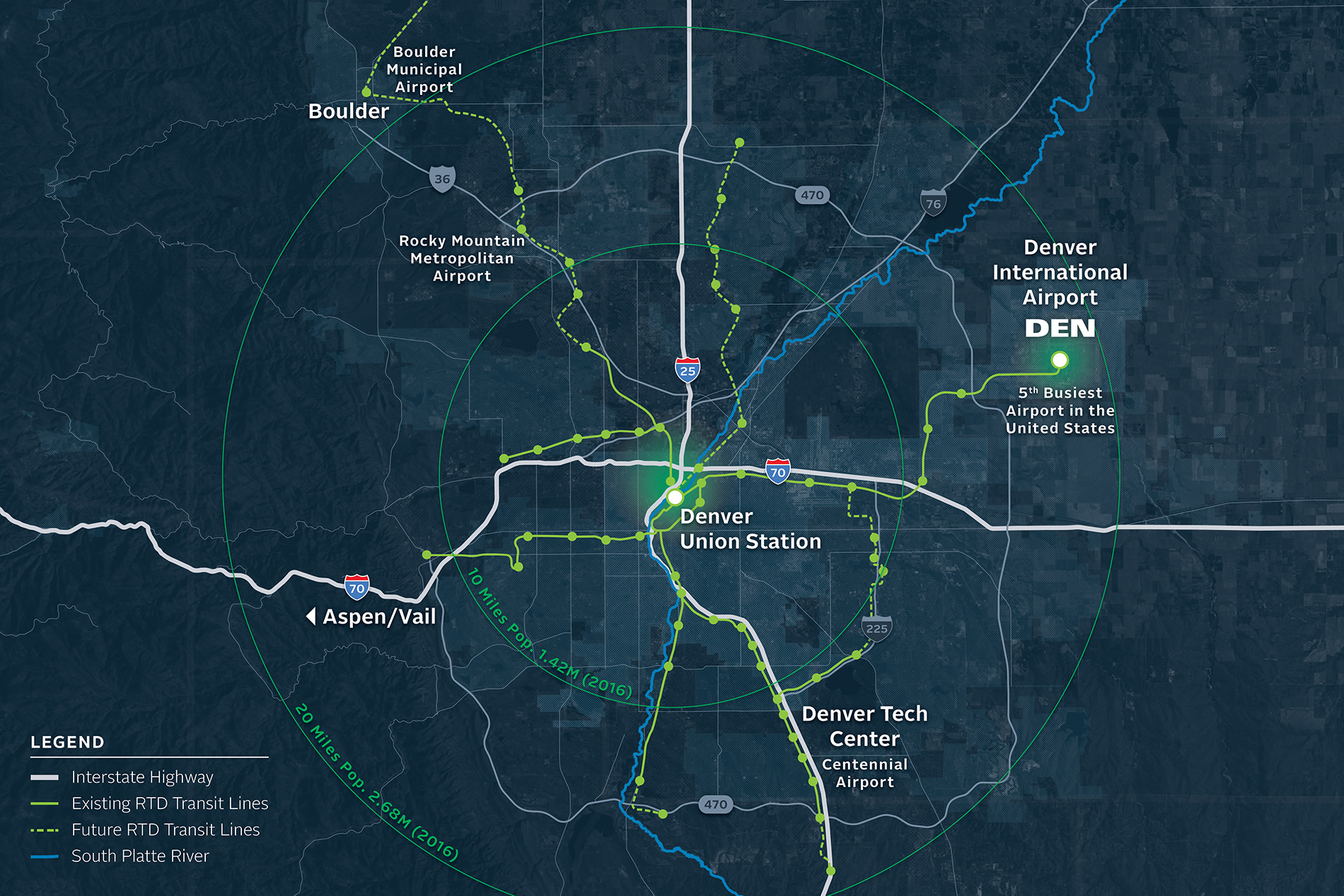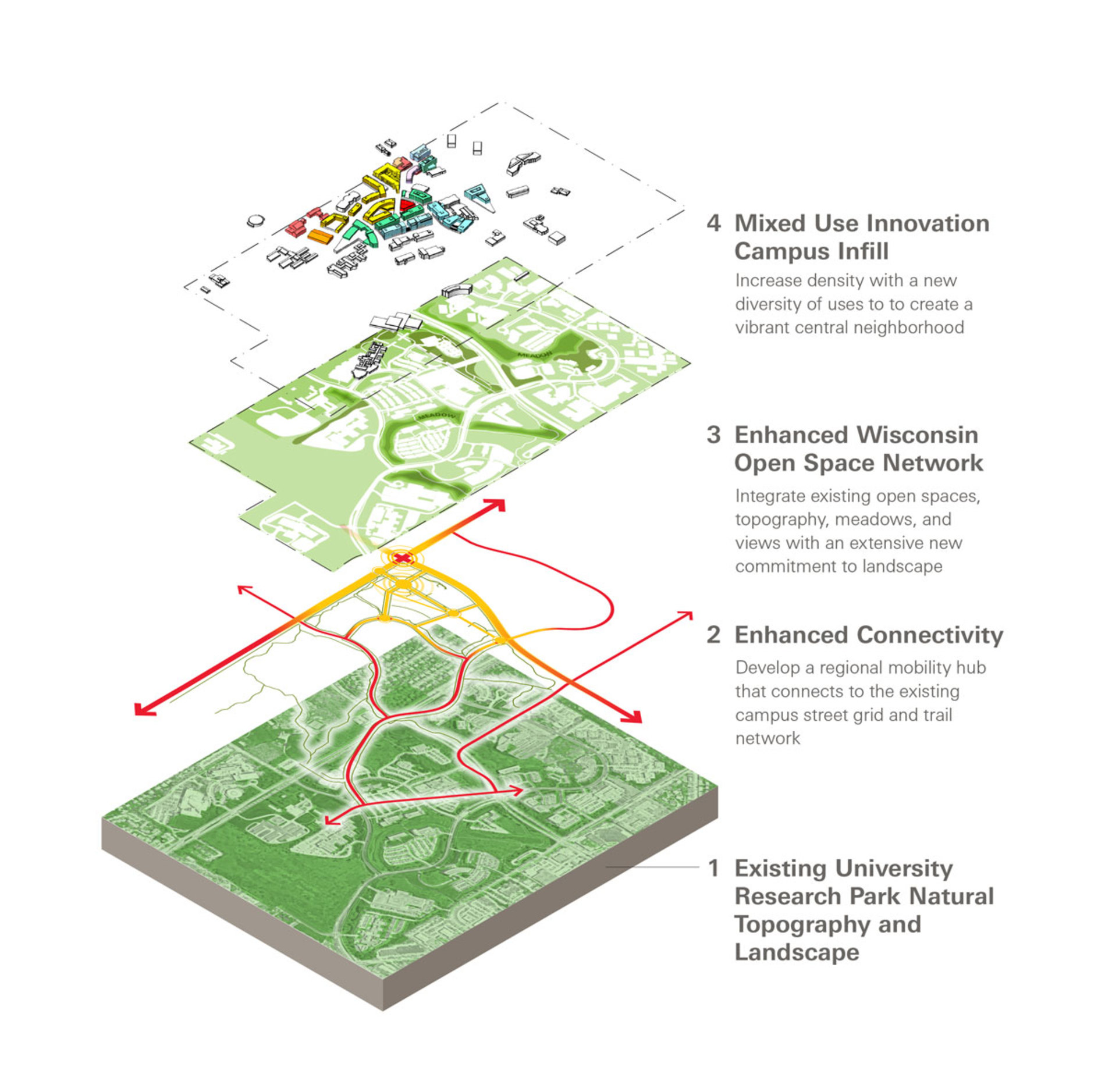
The suburbs have long represented a series of contrasting relationships and desires. Familiar descriptive phrases include: “I love the space and affordability, but I wish I could walk to more places.” “I would like to have additional amenities, but don’t want to give up affordability, easy access to parking and no traffic.” “We want a more inclusive community, but we have limited room for growth and density.”
While over the last decade significant effort has focused on the revitalization of the downtown urban and industrial core, the demand for suburban intensification has been equally strong. This trend is counter to much recent urban theory which has largely focused on the rise of the downtown and has often dismissed the suburbs as a place of sprawl and anonymity. As a result, a false rivalry has arisen that pits the urban against the suburban. As a practice, we view suburban intensification as a significant opportunity for innovative regional urbanization and city building. A strong, vital and resilient city relies on the complex interactions between a dense and vibrant downtown and the housing, recreation and employment opportunities offered by the suburbs.
The pandemic we are currently experiencing has accelerated demands to merge urban and suburban qualities of life, furthering our desire to be connected to nature, reinforcing the necessity of social interactions and proving shared public and civic experiences are vital to our culture and sense of identity. Simultaneously, trends toward remote officing, just-in-time delivery and experience-driven retail have rapidly changed the economic structure and footprint of our commercial landscape. As a result we have arrived at a unique moment where the economy, technology, social desires and public health and safety are converging, galvanizing the demand for civic urban placemaking in areas outside the downtown core.

While it’s easy to dismiss the possibility for change in the suburbs, it’s important to consider where we are in the broader city growth and development process. Two hundred years ago, downtowns were transient with limited civic infrastructure, often set up as industrial settlements along rivers and railroads. By the turn of the century, parks and parkways had become the foundation of civic urbanism and represented a desire to “Beautify the City” and improve the quality of life and public health. Central Park, Boston Common and Washington Park are enduring places of civic infrastructure and have created lasting value for their communities.
A critical new focus for city builders is refining and evolving suburban locations to offer an improved sense of place and identity while enhancing connectivity and providing a clearer focus on social, economic and environmental sustainability.
American cities are comprised of mid- to low-density suburban neighborhoods that hold a high percentage of the residential population and an increasing percentage of the employment base. According to the U.S. Bureau of Labor Statistics’ Quarterly Census of Employment and Wages, 32 percent of U.S. employment is in the suburbs of large metropolitan areas—that is, in the medium- and lower-density counties of metropolitan areas that contain at least 1 million people. Around 32 percent of the population also lives in the suburbs of these metros. Nationwide, closer to 52 percent of the population identifies their homes as suburban.
Savvy developers across the Front Range understand, that while Denver’s downtown has thrived, the largest employment center is still Southeast Denver. According to the organization Denver South, the region is home to nine Fortune 1,000 headquarters and six Fortune 500 companies and has an employment base of nearly 240,000 workers representing over 14 percent of total Metro Denver employment. This is compared to the 145,000 people working in Downtown Denver in 2019. As a result, we continue to see tremendous growth and demand for suburban intensification in Denver Tech Center, Centennial, RidgeGate and Lone Tree.

As people demand both space and urban amenities, the suburbs are poised for accelerated transformation from an underutilized, haphazard landscape to a unique, expansive format for civic suburban infill and intensification that is not beholden to a traditional downtown skyline or rigid Euclidian street grid. The structure of suburban fabric is more fluid, curvaceous and often aligned to natural topography. If American town urbanism was an exploration of standardization and order, most suburban contexts are formed of winding curves, sweeping roads and buildings that are isolated objects in the landscape. Properties function more individually than with a collective accountability to a broader urban structure. How can we incorporate the best of urban principles into the suburbs, bringing connectivity, order and legibility to these places? What are our best tools for design? How do we test market parameters and embrace new market demands?
As a practice, our suburban development drivers continue to be the fundamental principles of connecting people and place, integrating nature and open space and responding with careful and focused intent to market economics. Our work is providing stronger multimodal access and connectivity within the suburbs and across our growing metropolitan regions; building well-connected open spaces for the community; creating authentic walkable-mixed-use places; and embracing public-private partnerships to propel public improvement and civic infrastructure.
Start with Small Mixed-Use Clusters
It will take time for the suburbs to sustain larger swaths of mixed-use development, however, starting with smaller mixed-use clusters will allow for new patterns of growth and provide options for a more walkable and convenient quality of life. The pandemic has undoubtedly accelerated this transition, and the suburbs—with an excess of space devoted to parking, large format retail and commercial logistics—will increasingly have space for infill in close proximity to well-established suburban neighborhoods, school districts, parks and open space.
The suburbs’ competitive advantage is not to fully mimic the urban core, but to maintain personal space and connection to the environment, while also providing more convenient, better connected and denser hubs—where retail, office and residential converge around meaningful public spaces and well organized streets, open spaces and trail networks.

Integrating Landscape and Circulation is the Foundation for a New Sense of Place
Landscape is often the most underutilized and poorly considered aspect of the suburban commercial landscape, and yet it provides the greatest opportunity for placemaking. The most memorable urban and suburban parks have contextual specificity, whether they are organized around a river (Clear Creek in Golden and Confluence Park in Denver) or located to emphasize views (Washington and Cheesman Parks in Denver). Historically, Capitol buildings were located on high ground to signify the importance of government. The organization of key elements—circulation, open space and program—to work in concert with the environment creates order and meaning, establishing the structure for a unique sense of place tied to landscape.

Public Private Partnerships, Innovation and Entrepreneurship are Essential for All Types of Development
As economic and social forces drive fundamental change in the suburban landscape, the role of City officials in listening and guiding communities towards growth and facilitating partnerships between public and private sectors is essential for all types of development.
A collaborative ethos is inherent in projects related to educational and research institutions whose missions are often based on cross disciplinary innovation and building strong partnerships. Similar principles must be embraced for traditional mixed-use and residential developments to enable thoughtful design and execution, guide collaboration with the community and ensure development reaches its highest potential.

We are eager to continue shaping civic suburban environments and to propel a new generation of urbanism that reflects the environmental, social and economic values necessary in our world today. The potential is unlimited—over the next decade we imagine the suburbs as the site for an explosion of innovation and a model for new typologies of urban form: generous private and public spaces for recreation and gathering, strong connections to the landscape, sustainable and efficient infrastructure, easy access, affordability and opportunities for shared civic experiences. We are energized by the possibilities and honored to participate in this critical moment with our clients and development partners.